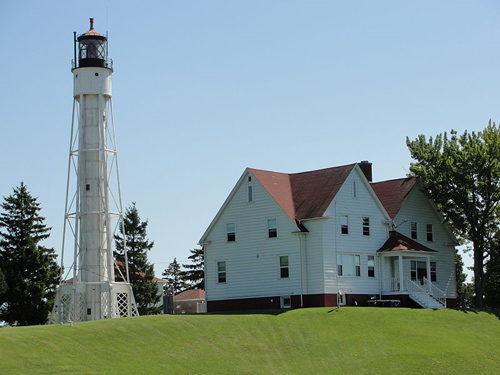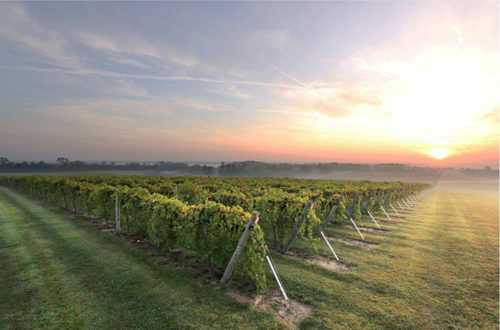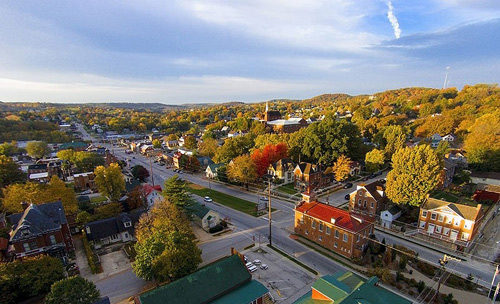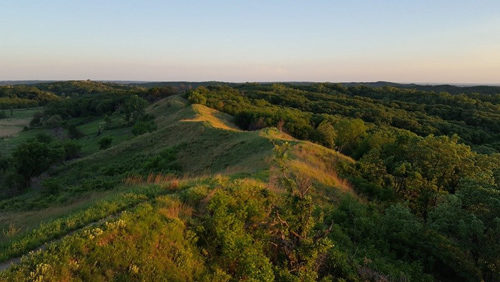Summer Road Trips: Midwestern Wine Trails
The call of the open road is as booming as ever. As far as domestic leisure travel is concerned, more Americans are opting to go by way of the automobile. Whether it’s due to the flexibility of packing heavy and stopping at will along the way or the nostalgia of highway getaways, road trips are back! The Summer Road Trips series offers destinations for the perfect American road trip.
The popularity of artisan beverages has led to an explosion of wineries across the country in recent years. While California is still the king of wine production here in the States, there are plenty of wine trails in the Midwest that can give you the Sonoma experience in the Heartland.
Lake Erie Trail (Ohio)
The moderating lake effect has made the region from Toledo to Buffalo a prime wine-growing spot since the 19th century. Visitors can enjoy a covered bridge driving tour across northern Ohio while stopping in at a variety of wineries, from the giant Debonné Vineyards to the quaint yet acclaimed Markko Vineyard.

Door County Trail (Wisconsin)
In Wisconsin’s Lake Michigan peninsula, eight wineries make up the Door County Wine Trail that takes visitors through the “Cape Cod of the Midwest.” Boasting the same latitudinal planes as the wine regions of Burgundy and Bordeaux, Door County’s established wine scene offers traditional varietals as well as sweet fruit wines to accommodate every palate. Visitors can be sure to stay active and entertained given the peninsula’s reputation for hospitality.

Uplands Trail (Indiana)
Since the 1960s, winemaking on the plateau of south central Indiana has taken off. The Uplands Trail, stretching from Brown County to Bloomington to French Lick, features the nationally ranked Oliver Winery and Vineyards, a destination for fruit wines like Apple Pie, Cherry Cobbler, and Blueberry Moscato. The historic West Baden Springs and the Hoosier National Forest provide sundry excursions for this route.

Shawnee Hills Trail (Illinois)
Eleven wineries sit in the Shawnee Hills of southern Illinois, where limestone and sandstone formations tower over the rolling hills of a burgeoning wine industry. In 25 miles, the trail passes through small towns and the Shawnee National Forest, boasting quaint B&Bs, fall color, and — of course — wine. Blue Sky Vineyard offers a Tuscan setting and estate-grown vino, and Von Jakob houses a brewery as well as a winery.

Hermann Trail (Missouri)
Along the Missouri River, six family-owned wineries make up the Hermann Trail near the German town of Hermann. The Adam Puchta Winery bills itself as the oldest continuously-owned family winery in the country; the current owner is a seventh generation winemaker. Two miles north of Hermann is the Katy Trail, the nation’s longest rails-to-trails project at 240 miles.

Glacial Hills Trail (Kansas)
Outside of Topeka and Lawrence, four family-owned wineries take advantage of the rich prairie soil created by receding glaciers in the area. A quiet Kansas getaway can include an affordable stay at the Crescent Moon Winery or Jefferson Hill Vineyards, and a day boating or hiking at nearby Perry Lake.

Loess Hills Trail (Iowa)
The silty hills of western Iowa were formed by sand-blown deposits toward the end of the last ice age. While loess soil is common in North America, nowhere is it deeper than in this special grape-growing region. All nine of the trail’s participating wineries commit to sustainable practices for producing wine from the delicate soils of the region. The Loess Hills Scenic Byway twists up through the unique landscape and past the wine destinations.

(Minnesota)
Viking lore is at the heart of the Skål Crawl in lake-rich central Minnesota. The short trail includes a winery, a brewery, and a whiskey distillery near historic Alexandria. Small groups can imbibe Minnesotan beverages and visit Big Ole, the tallest Viking statue in North America, and the Runestone Museum, a tribute to the mythological Scandinavian history of Minnesota.
